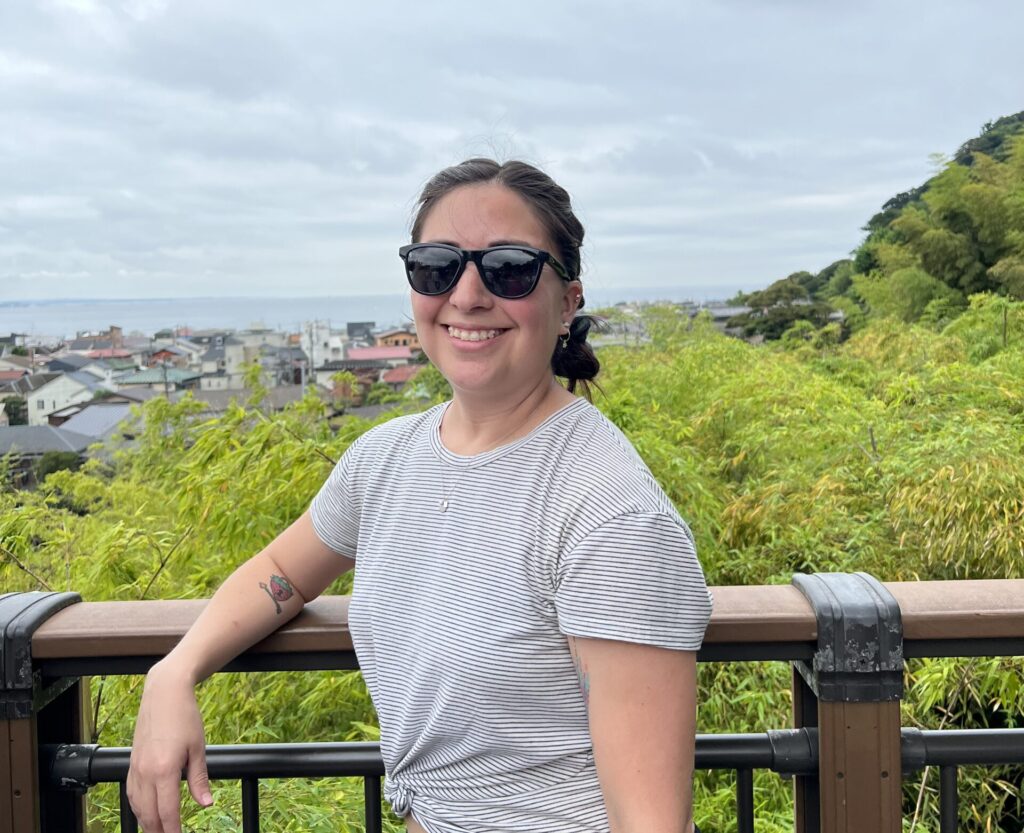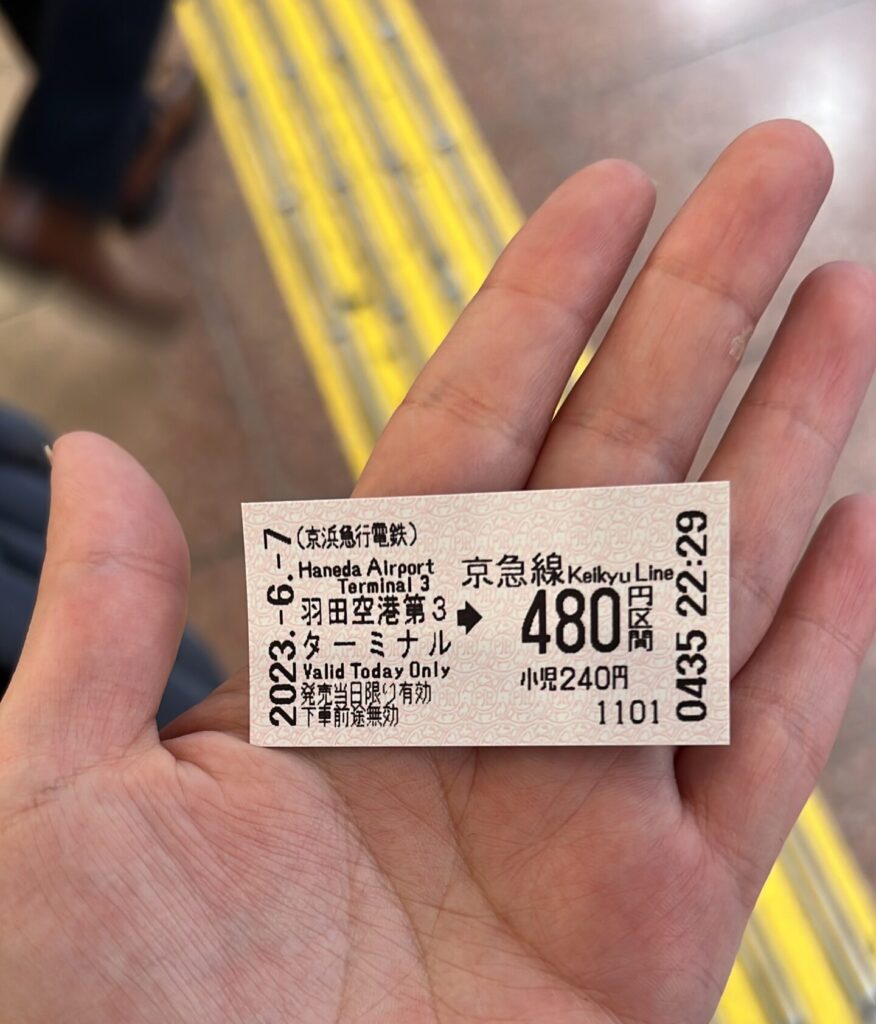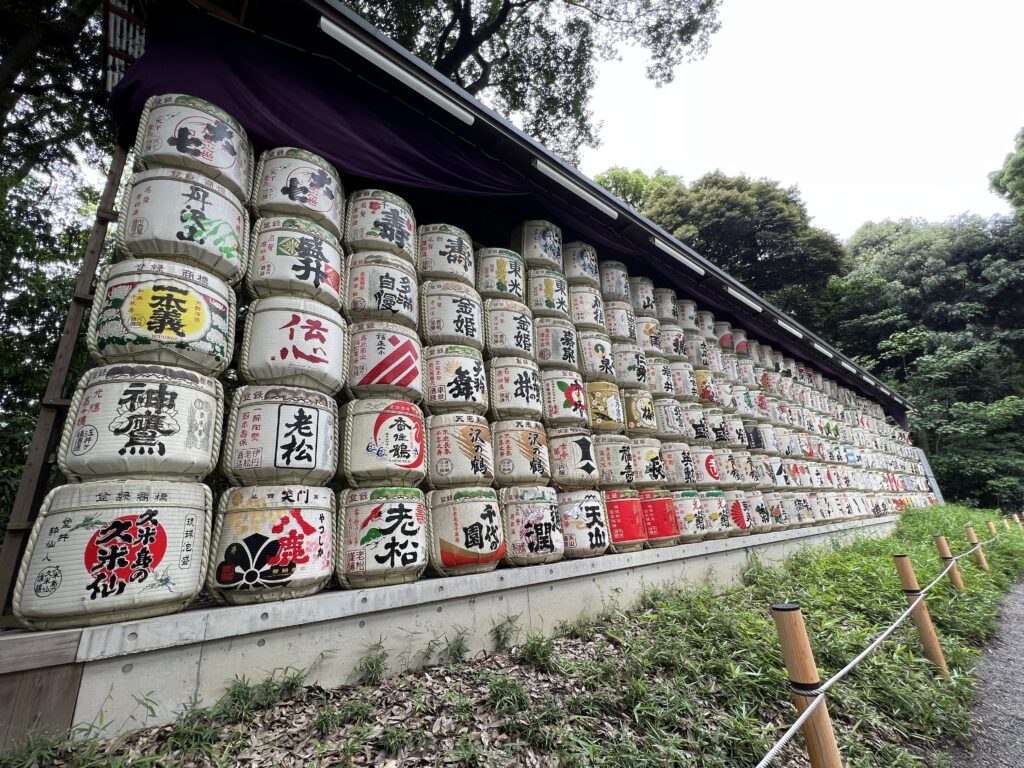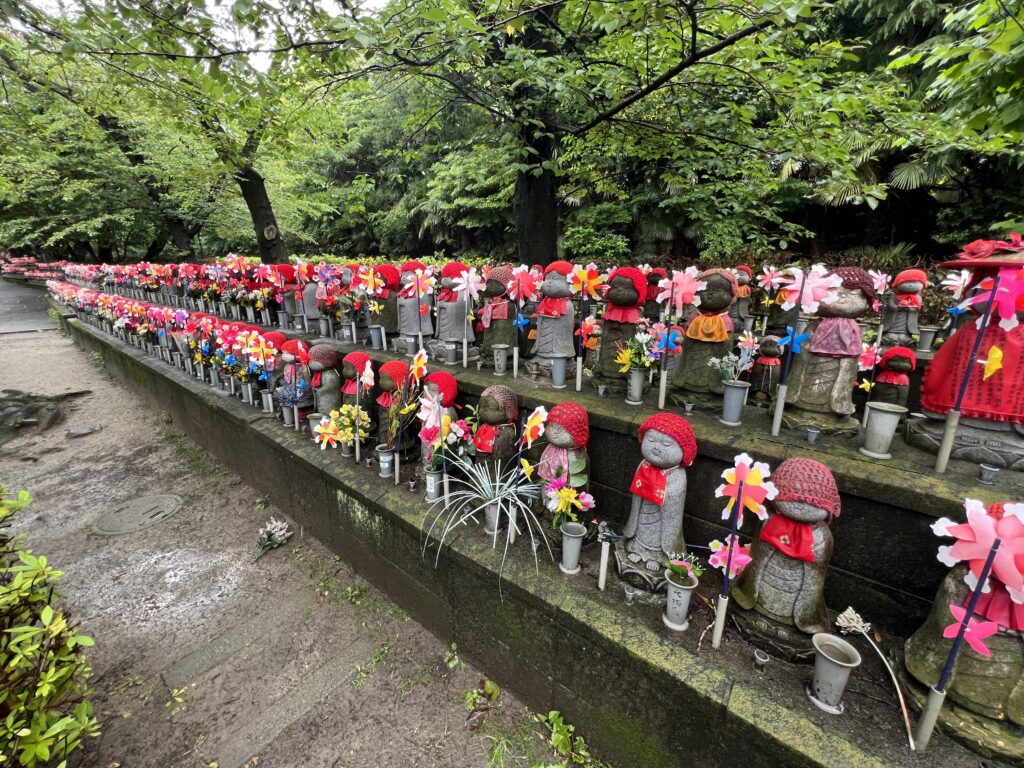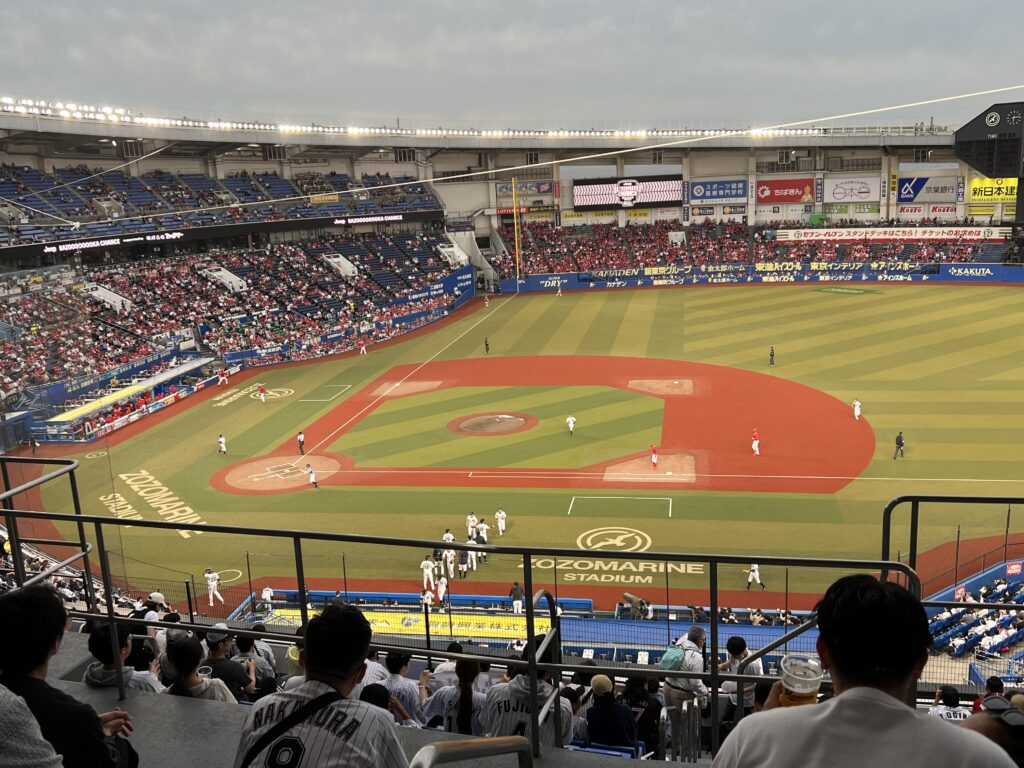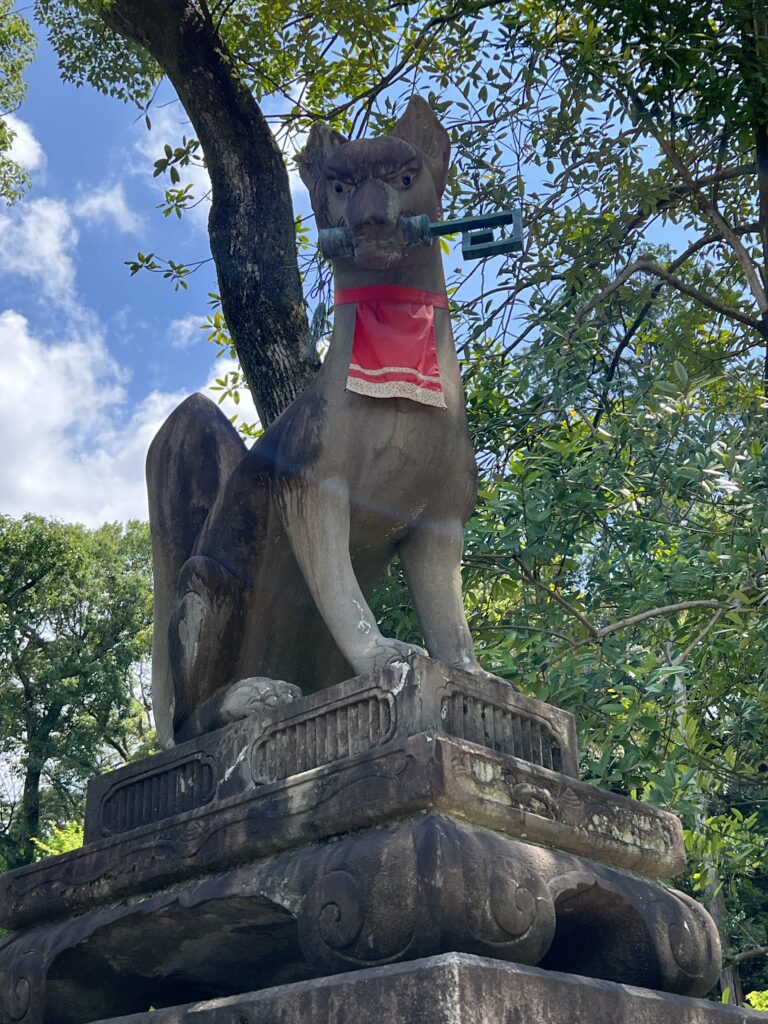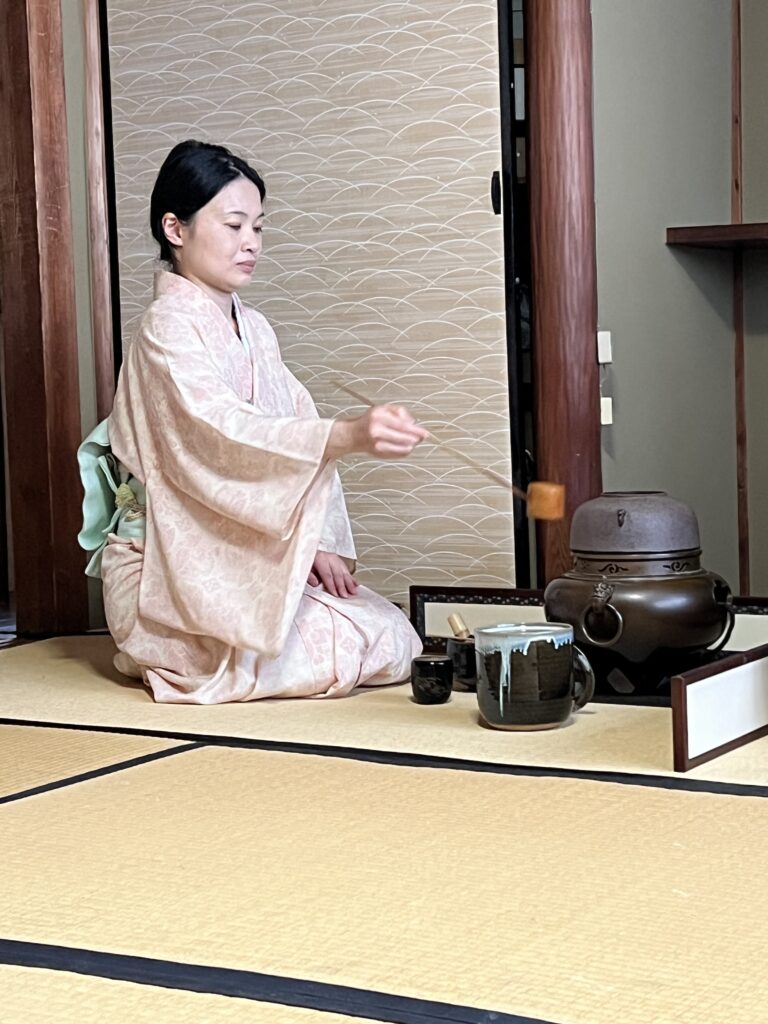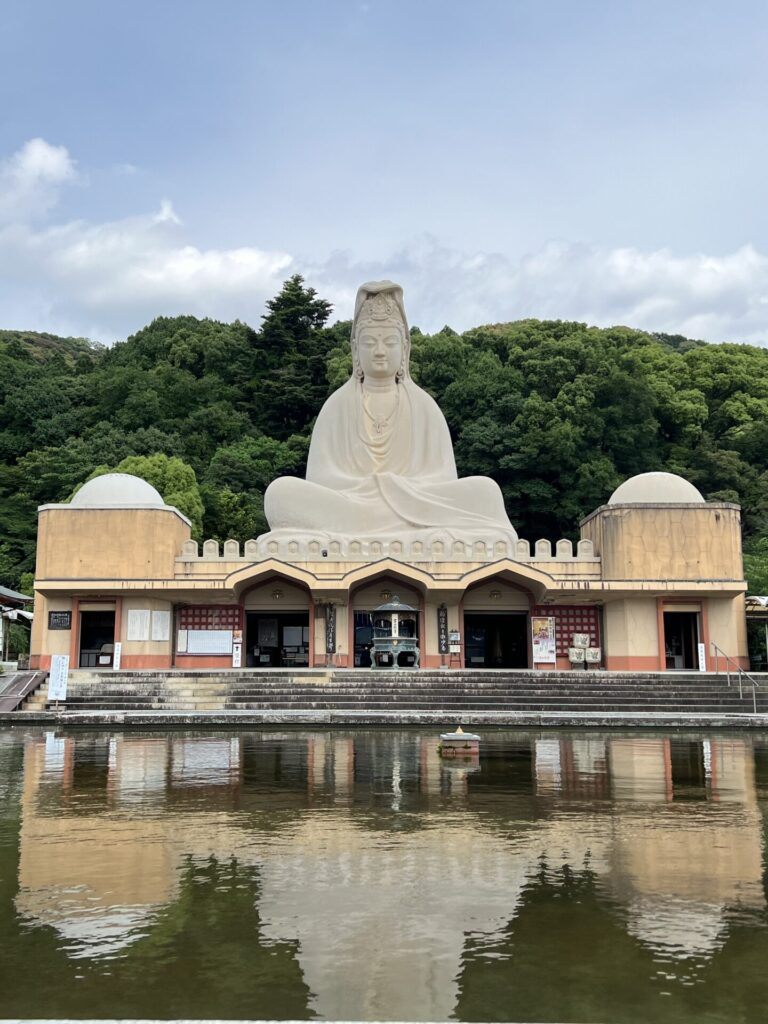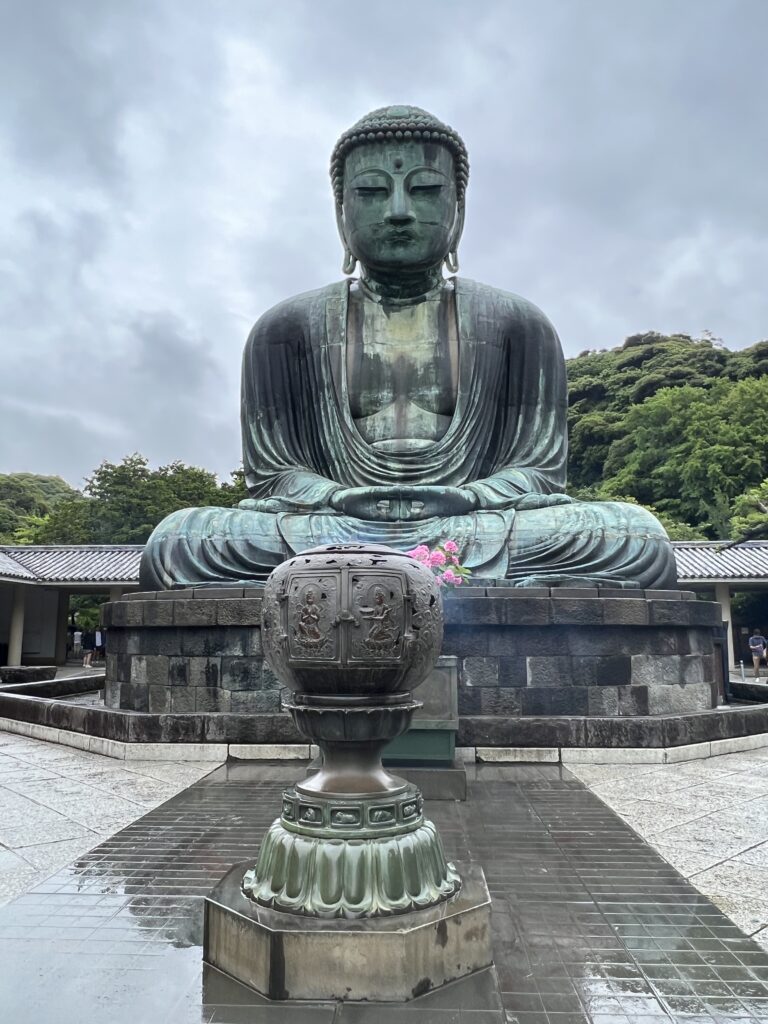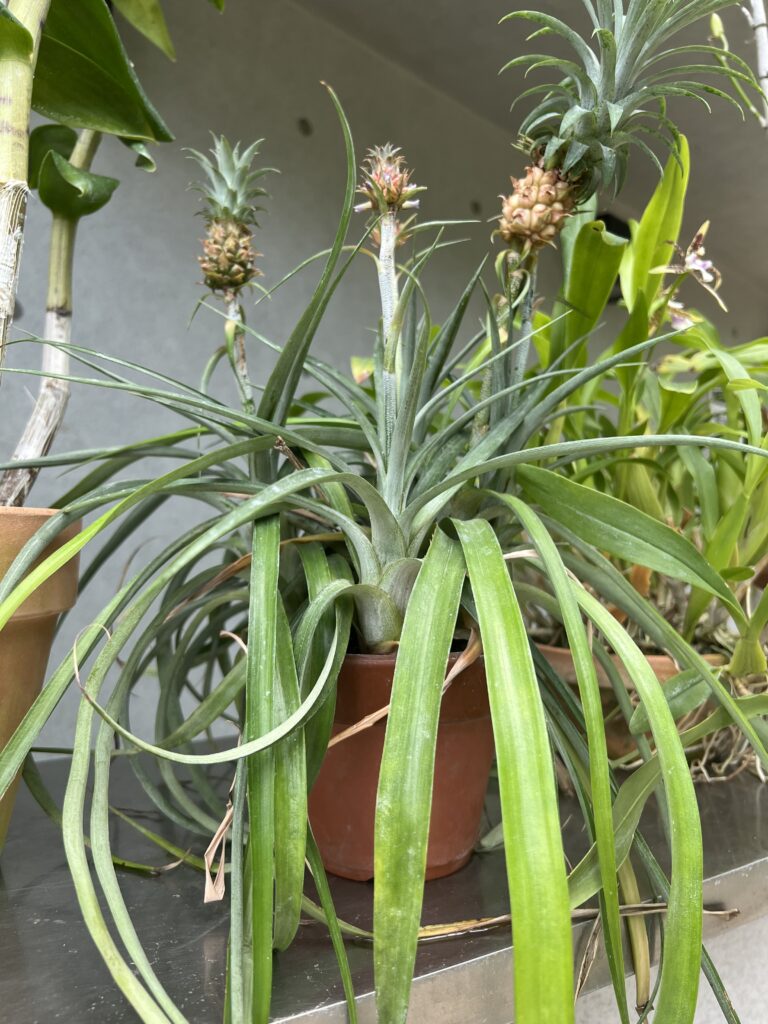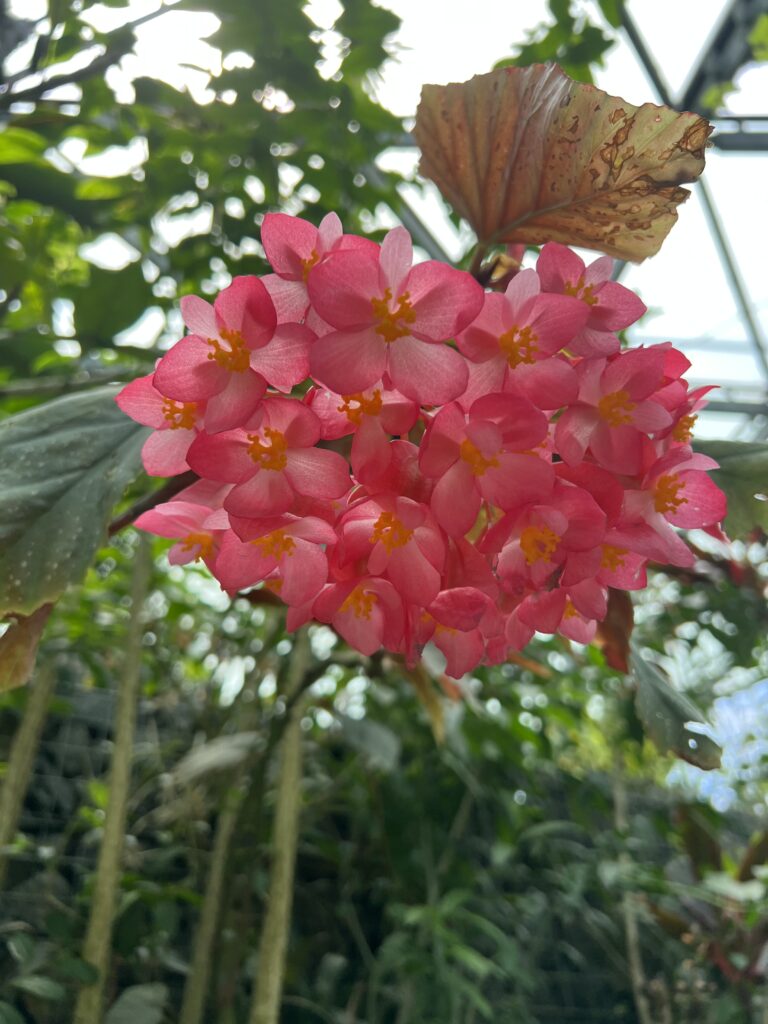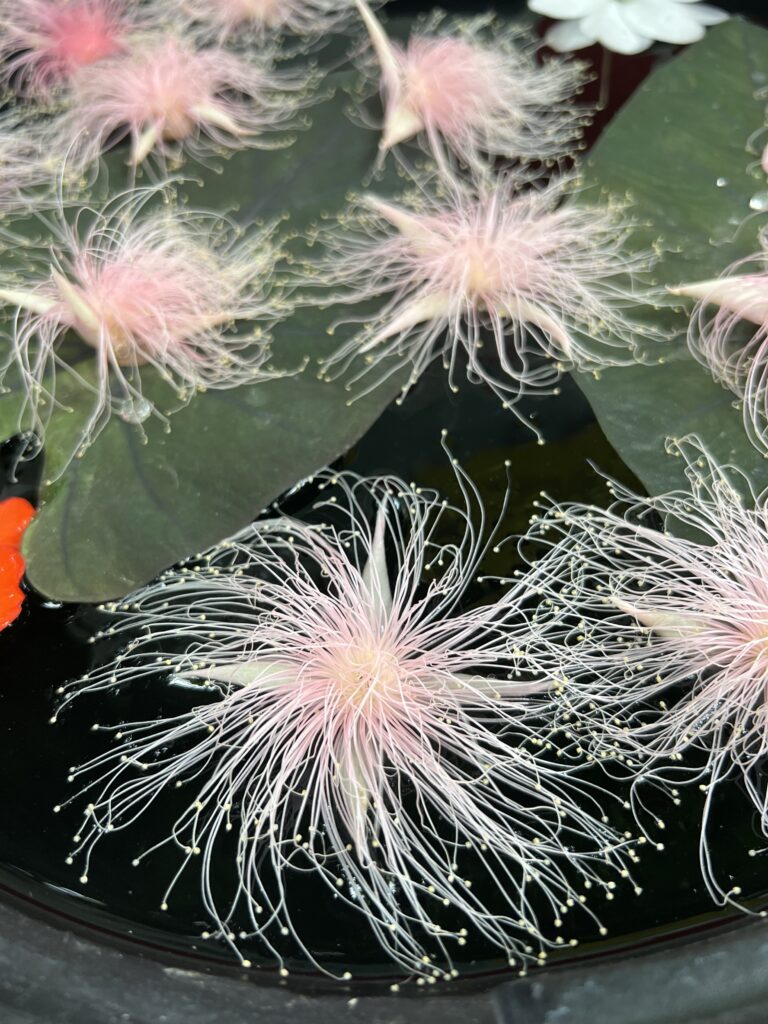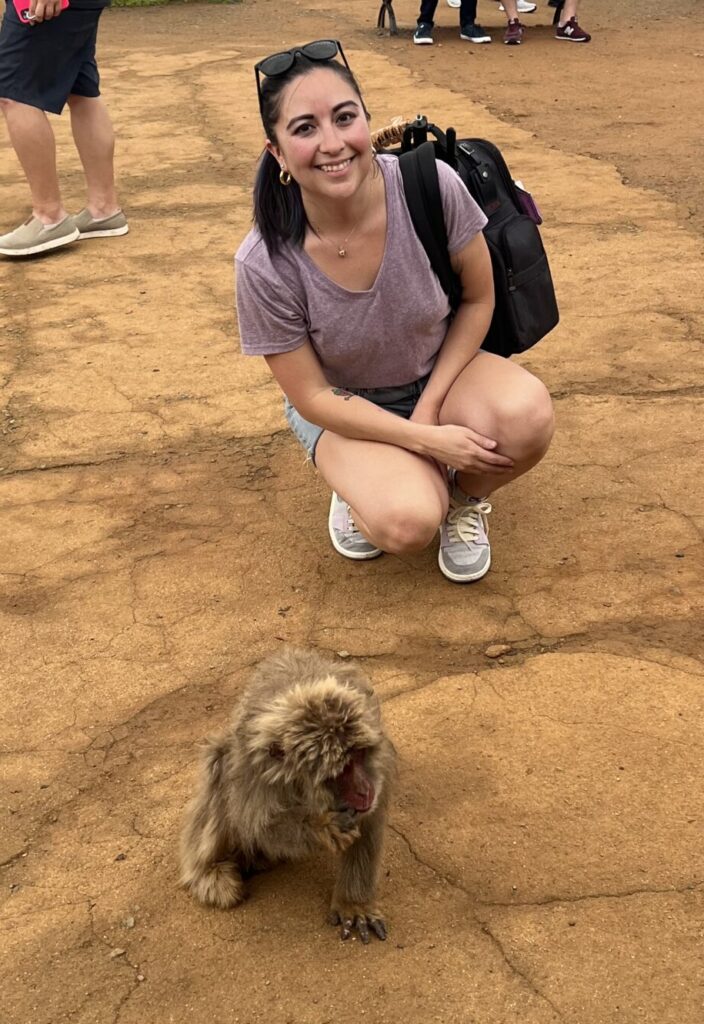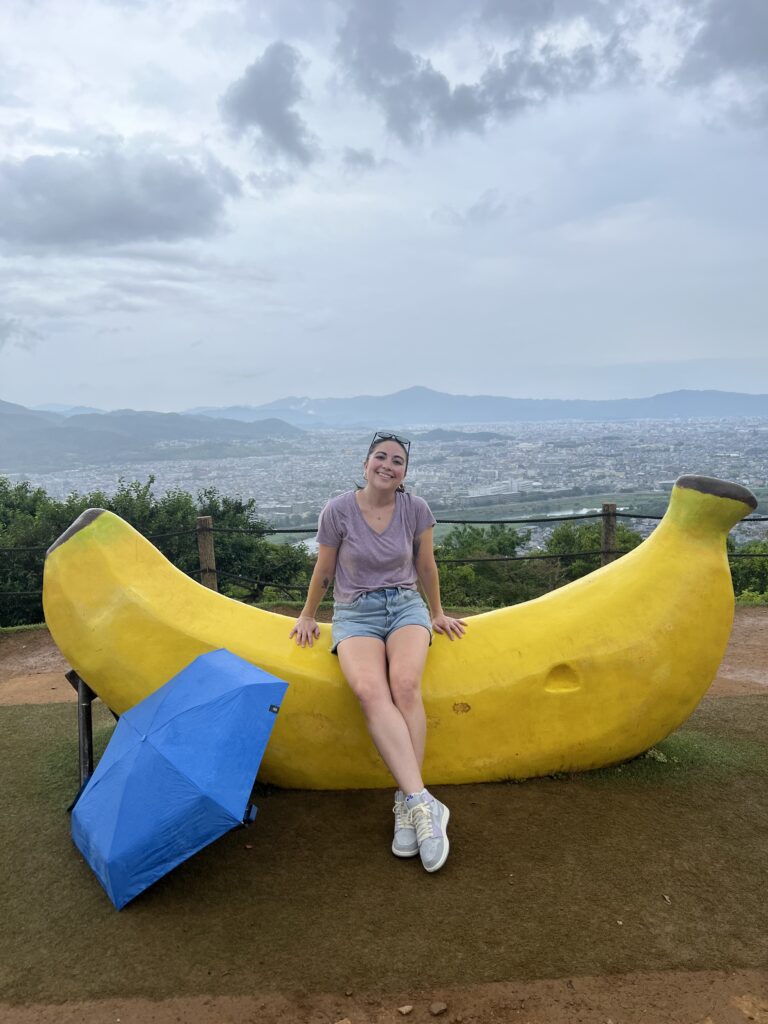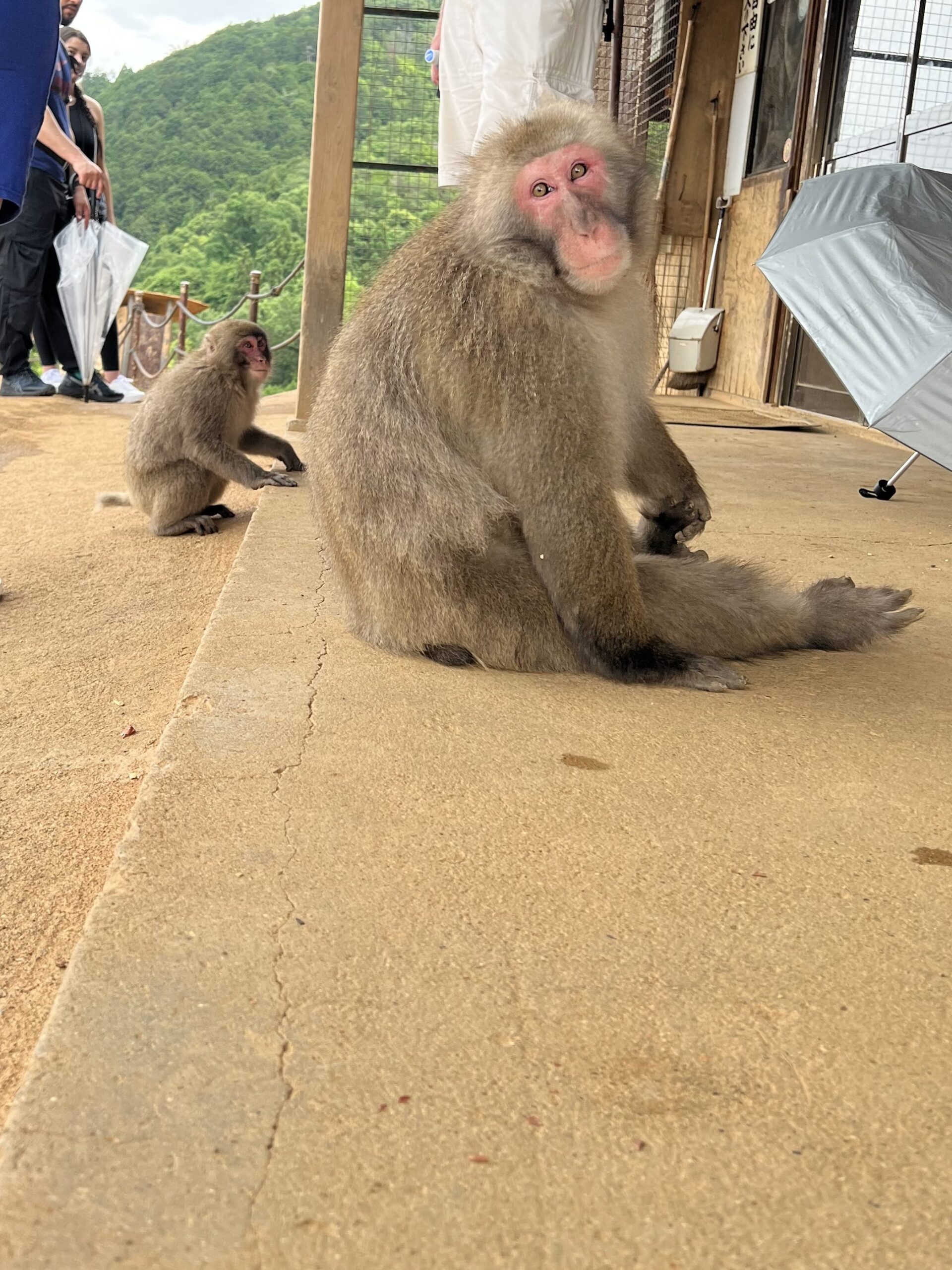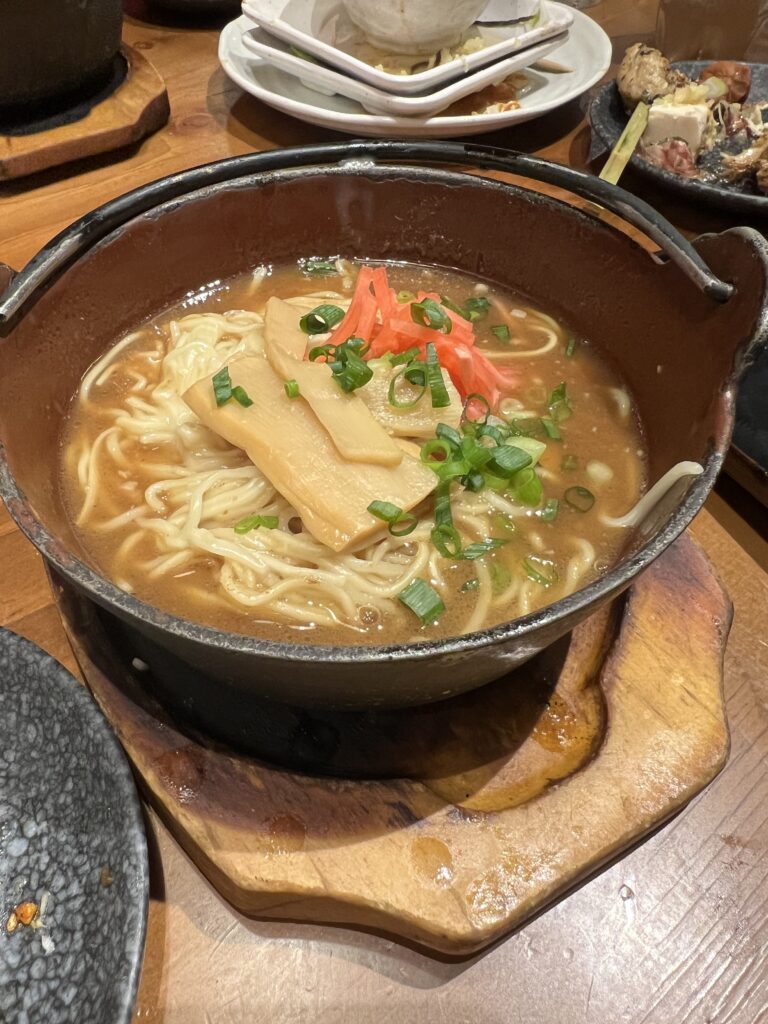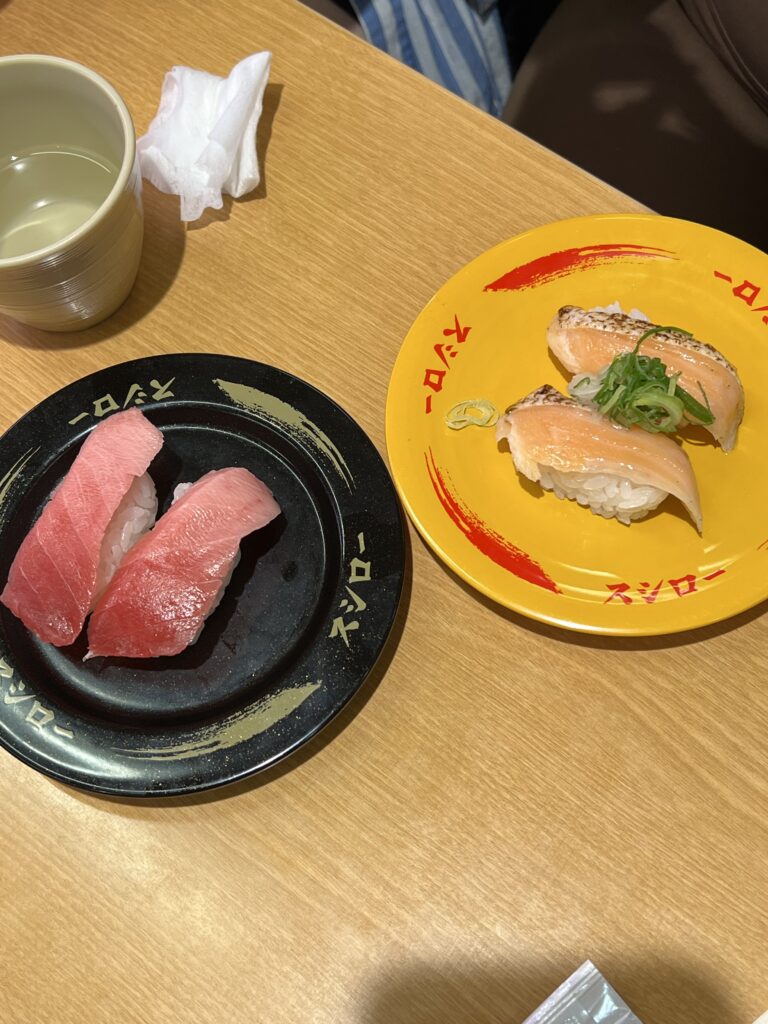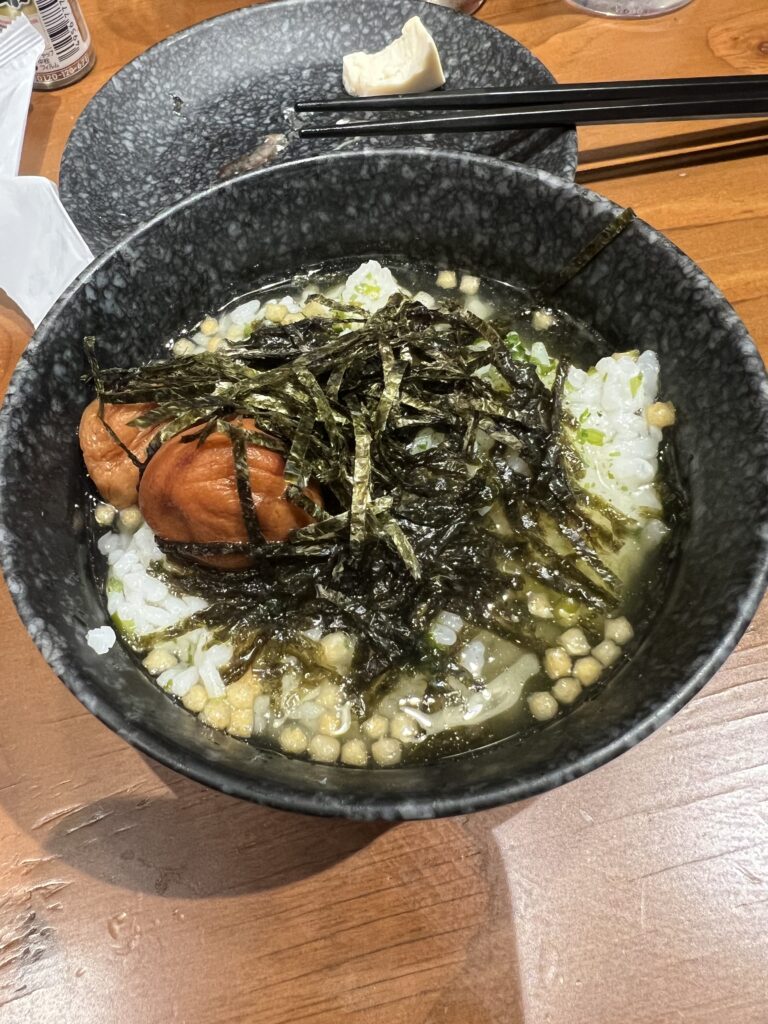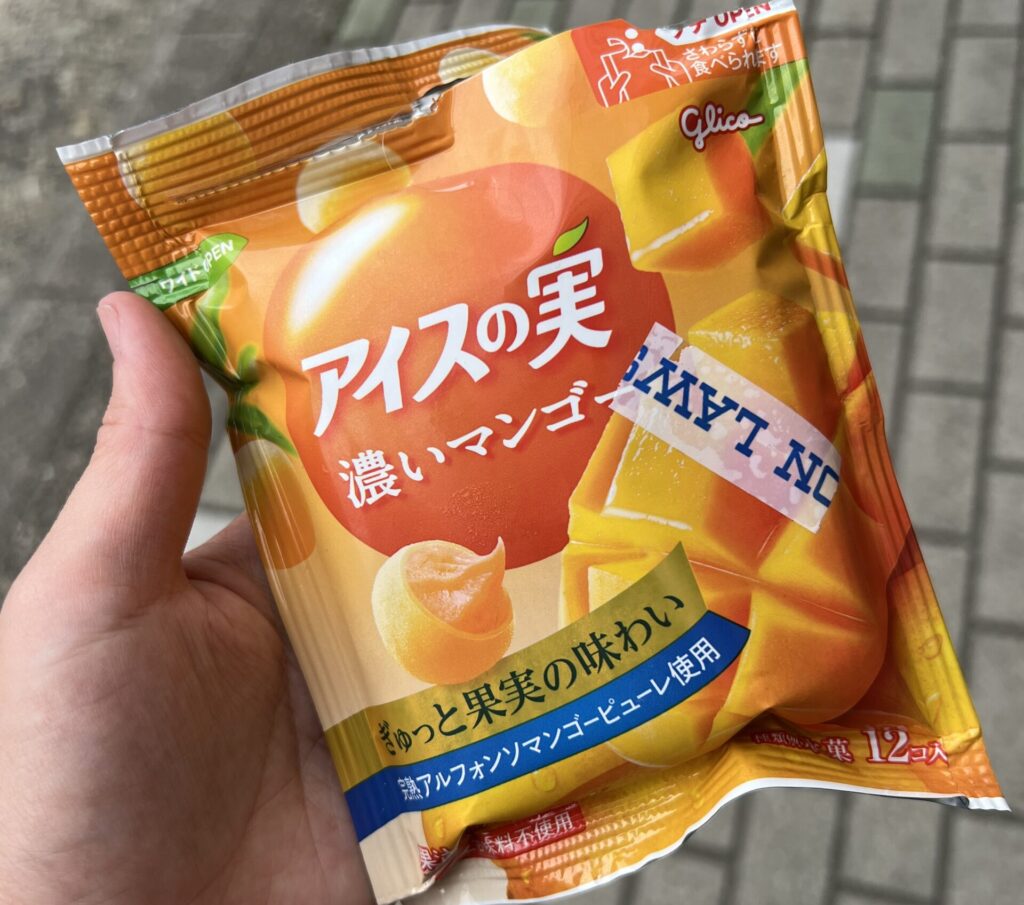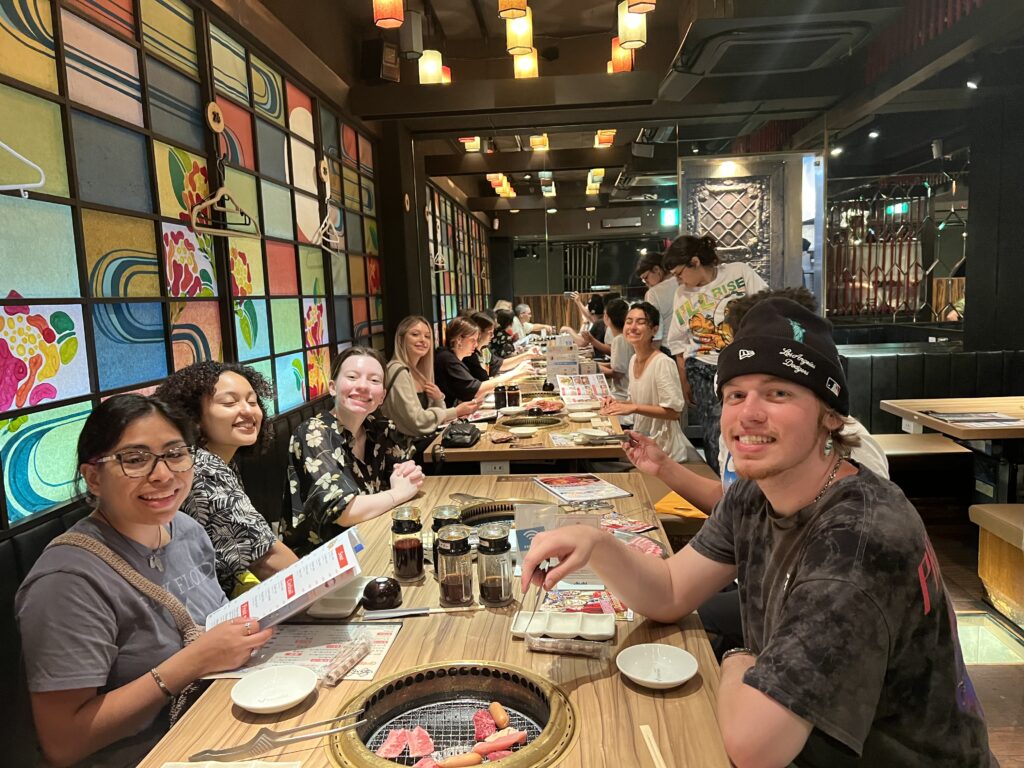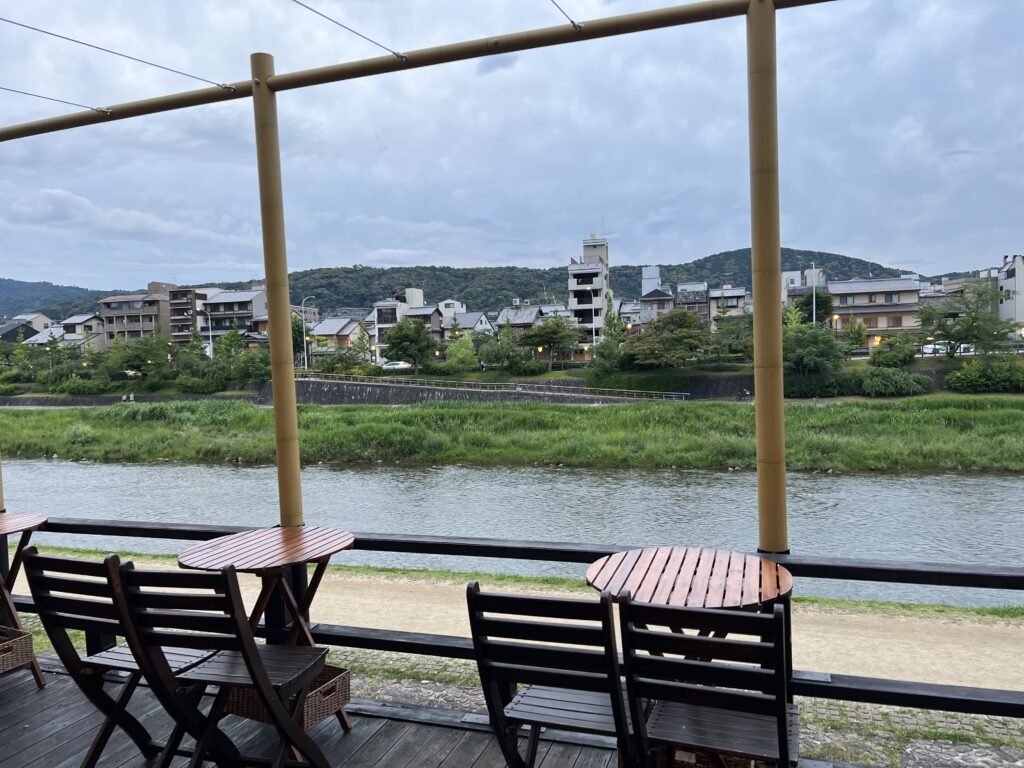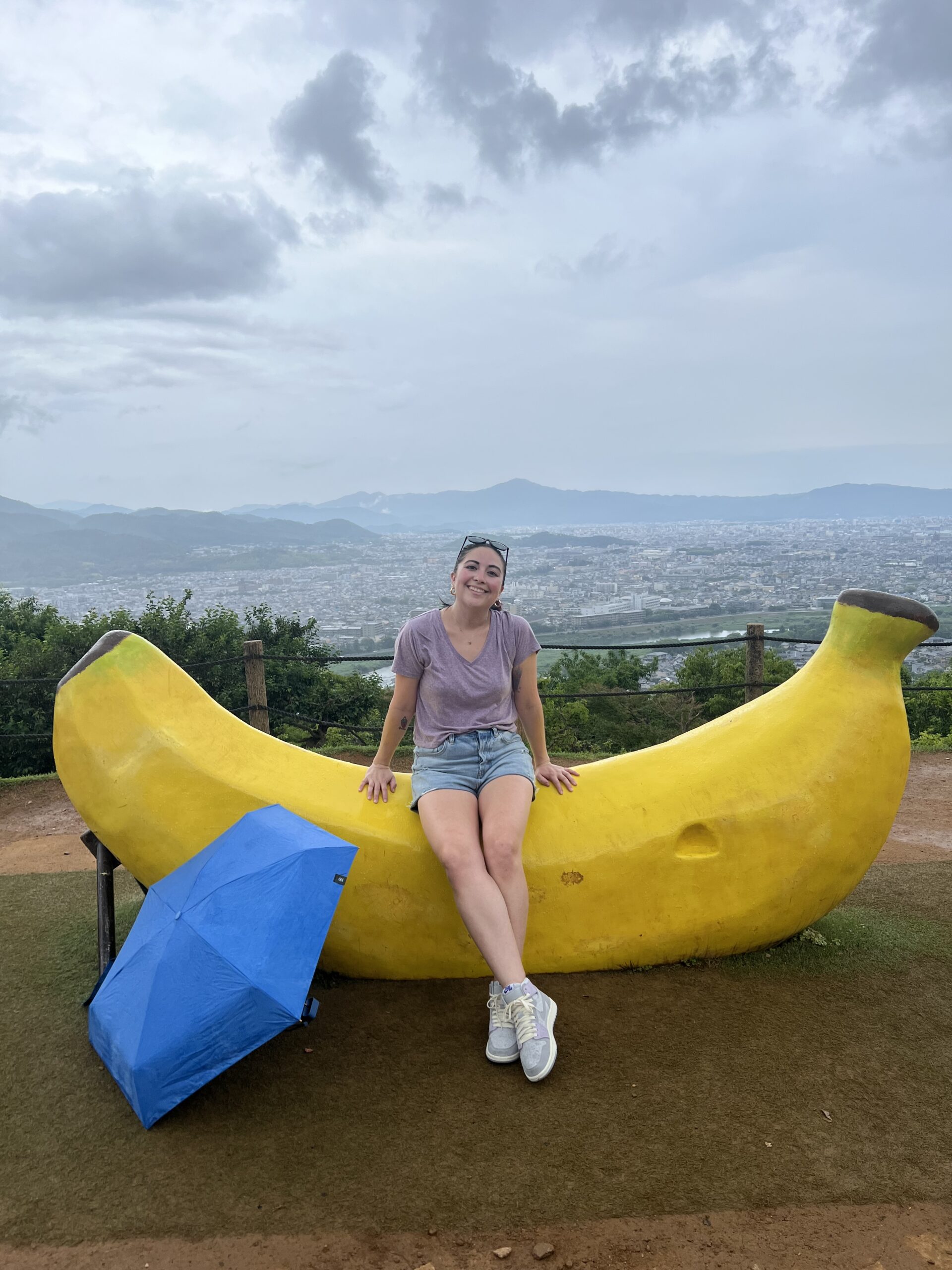
Me, sitting on a photo prop at Arashiyama Monkey Park.
I spent my first 30 minutes in Tokyo quietly crying in the Tokyo International Airport.
Prior to my arrival, I was feeling pretty proud of myself for my roll-with-the-punches attitude I’d had all day. I’d been traveling about 30 hours, 17 of which were in the air, and only about five of which were spent sleeping (in a really uncomfortable, un-reclinable, middle seat in the last row on a flight I was put on at the last minute after my original one got delayed).
I had to unexpectedly check my bag, but I collected it from baggage claim like I was a seasoned checked-bag traveler (I am not). I had a problem accessing my QR code to go through customs – no worries, I filled out a paper form. I promptly went to an ATM and took out what I hoped was a reasonable amount of cash for the week, and deftly took the foreign bills like I handled yen every day of my life. I strolled toward the Japan Rail Station located in the airport with full confidence.
But for some reason – blame it on exhaustion, anxiety, homesickness – trying to navigate the train system is what broke my cool attitude. I was alone, in an airport whose information centers were all closed by the time I arrived, in a city where I was relying on near-strangers to be my support system. I hadn’t yet gotten my pocket wifi and had to rely on the free airport internet to get through to someone on my team.
It was Not Great™.
Luckily, this was the last of my bad times on my first-ever overseas trip. I secured my train ticket (finally!) and made my way to the Toyoko Inn to join the rest of the team.
What followed in the days after was a culture crash-course – partaking in authentic Japanese cuisine, visiting Buddhist temples and Shinto shrines, navigating around the language barrier. It was also a wondrous journey in self-discovery, professional discovery, spirituality and maturity.
My 10 days in Japan, while delightful, were a bit of a whirlwind. It was a small taste of Tokyo – literally and figuratively.
In only five days in Tokyo, we managed to visit the Tsukiji Outer Market, the Shinjuku Gyoen National Garden, the Meiji Jingu Shrine, Harajuku, The Wall Street Journal Tokyo, Tokyo Tower, Rikkyo University, a Chiba Lotte Marines baseball game, the Ikebukuro Life Safety Learning Center, Time Out Tokyo and (best for last, in my opinion) the Great Buddha of Kamakura (Kamakura Daibutsu).
In our four days in Kyoto, we visited Kiyomizu-dera (literally, “the water temple”), Gion (the geisha district), Yasaka Shrine, the Kyoto Shimbun (local newspaper), the Kyoto Imperial Palace, Nijo Castle, a traditional Japanese tea ceremony and, potentially the highlight of the entire trip for me, Iwatayama Monkey Park in Arashiyama.
Feeding my soul
It is an awe-inspiring experience to witness global landmarks firsthand. The Great Buddha evoked a profound emotional response, bringing tears to my eyes (joyful ones, this time) as I carefully lit an incense stick: a heartfelt offering in exchange for the Buddha’s blessings. Although I am not a deeply religious person, the Buddha’s depictions resonated deeply within my soul. Each visit to various temples filled me with a profound sense of tranquility as I inhaled the earthy fragrance of burning incense and made my offerings, seeking the Buddha’s benevolence.
At each temple, I cherished the opportunity to present my goshuinchō, an accordion-style book, for the stamping of a goshuin – the former, a book with accordion pages, the latter, a stamp obtained at each temple or shrine to commemorate your visit. It was truly captivating to witness the meticulous hand-calligraphy of the date in kanji (Japanese lettering) performed by the monks themselves. Although collecting goshuin is undoubtedly a popular tourist activity, there was an air of reverence surrounding the process, as if by obtaining these stamps, I was taking a tangible piece of each temple with me.
Stepping off the shinkansen in Kyoto was like stepping into an entirely different world. While Tokyo is a buzzing metropolis, Kyoto is quieter and slower. However, that’s not to say it doesn’t hold its own as a treasure trove of epic sites and attractions.
Kiyomizu-dera might, upon first impression, seem similar to the many other shrines and temples found throughout Japan. However, it holds several unique experiences within, including a walk through a pitch-black tunnel, an experience that symbolizes the womb and rebirth.
It’s 100 JPY to take the five-minute walk through the tunnel, and, as with many temple and shrine experiences, we were asked to remove our shoes before entering. A thick, gold rope is visible just outside the entrance.
With one hand on the rope, we plummeted into total blackness.
This was darkness as I have never experienced it before. I could not see an inch, much less further, in front of my own face. As I walked through, blindly putting my trust in the rope that tethered me to the outside, I almost began to see things with me in the dark. Upon seeing the first glimpse of light, according to tradition, you are to make a wish. Putting aside the obvious wish that I might make it through this dense darkness, I squeezed my eyes shut and made a silent request before walking out into the bright June sun.
Feeding my passions
One particular non-spiritual site that left an indelible mark on me was the Shinjuku Gyoen National Garden, a paradise for a self-proclaimed “crazy plant lady” like myself. Eagerly anticipating the discovery of Japan’s exotic flora and fauna, I was astounded to find a national park boasting a greenhouse adorned with over 1,700 plant species.
Plants beyond my wildest imaginings gracefully cascaded from the ceiling, embraced the walls of the captivating waterfall feature and snaked along the ground. A kaleidoscope of rainbow-hued flowers greeted me at every turn. One small pot on a shelf even held several tiny pineapples, standing merely one to two inches tall.
Given the chance, I would have blissfully immersed myself in that greenhouse for an entire day.
Luckily, throughout Japan, a plant fanatic like myself can find a variety of blooms to admire. The most notable: the brilliantly-colored hydrangeas. Hydrangeas dot the streets as well as the temples and shrines with wonderful spots of blue, purple, white and pink. Everywhere you look, a hydrangea is there to greet you.
While in Kyoto, I had one mission: to hike up to Iwatayama Monkey Park. The park is at the peak of a small mountain in Arashiyama, and is teeming with Japanese macaque monkeys, also called snow monkeys.
As I trekked up with a couple of other women from the group in tow, I admittedly began to wonder if it would be worth the steep hike in the hot, humid climate. I had packed along my 360-degree camera in hopes of snagging some great footage, and about 15 minutes in, I was ready to ditch it and hope it was still on the side of the mountain when I came back down.
We passed two rest stops on the way to the top, each loudly announcing the three main rules over a loudspeaker, as well as via signage: 1. Do not look the monkeys in the eye; 2. Do not touch the monkeys; and 3. Do not feed the monkeys outside of the designated feeding area.
Done and done. I wasn’t trying to have a monkey flying at my face.
I was contemplating simply rolling back down the mountain when, very suddenly, a monkey was in the path. It ambled across and joined another monkey in a tree to my left. The more I looked around, the more monkeys I saw. Silently squealing with delight, our group walked a bit faster and finally reached the peak. Once there, however, I briefly forgot about the wild monkeys around me.
An epic, glorious view of the entirety of Kyoto stretched out before us. The river flowed peacefully from north to south, and the city lay in two halves on either side of it, in a cozy pocket made by the mountains.
The monkeys themselves were supremely tolerant of the dozens of people milling around them. One mama monkey cradled her baby close as people oohed and ahhed over it. One monkey slept in a corner of the porch surrounding the feeding area. We hurried in to purchase peanuts and apple pieces to feed the macaques through the bar-covered windows of the hut. The monkeys carefully took each morsel, gently squeezing our fingers in thanks as they scurried off to enjoy their treats.
Back outside, we explored the other areas of the park – the trail went up a bit further, and monkeys swung from tree to tree, scampered across the path and lazily groomed each other in the grass. One monkey brushed against my legs like a cat – a moment that will live in my top moments of my life potentially forever (sorry, not sorry, births of my hypothetical future children).
Feeding my body
In between these monumental sights, I was literally tasting all the delicacies the country had to offer.
I had the most exquisite and tender sushi I’ve ever had in my life at Sushiro Minamiikebukuro, a conveyor-belt sushi restaurant near Rikkyo University. I was slurping savory, warm, comforting ramen and trying the peculiar Japanese … eh, treat … ume (a salty, sour pickled plum that’ll set your salivary glands in overdrive) at Teketeke, a popular restaurant with many locations throughout Tokyo.
I indulged in crispy, succulent karaage (Japanese fried chicken), spicy soba noodles and a huge, baka-sized pineapple soda garnished with fresh pineapple at Chiba-chan, an izakaya (bar and grill) in Akihabara. Baka-sized literally translates to “idiot sized,” as in: it’s stupid how large this is.
I was sampling warm, juicy, sweet ichigo ame (candy-coated strawberries) and cloud-soft strawberry mochi from a street vendor in the Tsukiji Outer Market. I crunched down on sweet, frozen GariGari bars from 7-Eleven. GariGari bars are soft flavored-ice bars, so named for the onomatopoeia of the sound one makes as they race to eat it.
In Kyoto, I dined along the Kamo River, which runs north-to-south through the city, in the Kawa Cafe (literally, River Cafe). As I sipped my ramen, huge cranes swooped overhead, and the resident cafe cat slinked through the tables.
I discovered my favorite Japanese frozen confection, Ice-no-Mi frozen mango balls, and attended an all-you-can-eat yakuniku restaurant, where you cook your own meat and veggies right at the table.
Most delectably, I went to a Japanese barbecue steakhouse, Yakiniku Yazawa, where our server cooked tantalizing cuts of wagyu beef right at the table. The meat was so tender, it hardly required chewing.
“I’d come back to Japan just for this steak,” I said.
If you think reading about this experience sounds great (and exhausting!), it’s nothing compared to living it. Our group was walking an average of six to eight miles per day. While the temperatures hovered around the low 80s each day (a mild contrast to the blistering Texas Junes I’m used to), the humidity held at about 87% – and we had the sweaty brows to prove it. It rained on us about half the time. Oh, and we were navigating 18 or so people through the congested streets and trains of Tokyo.
Yet, as I collapsed into bed each night, the fatigue and exertion seemed insignificant in comparison to the remarkable experiences that had unfolded throughout the day.
While Japan was my first trip abroad, it certainly won’t be my last. Equipped with some newfound abilities to navigate a foreign country, and having honed some skills I hadn’t dusted off in a while, I look forward to adding some more stamps to my passport – and, yes, one day, returning to Japan.
